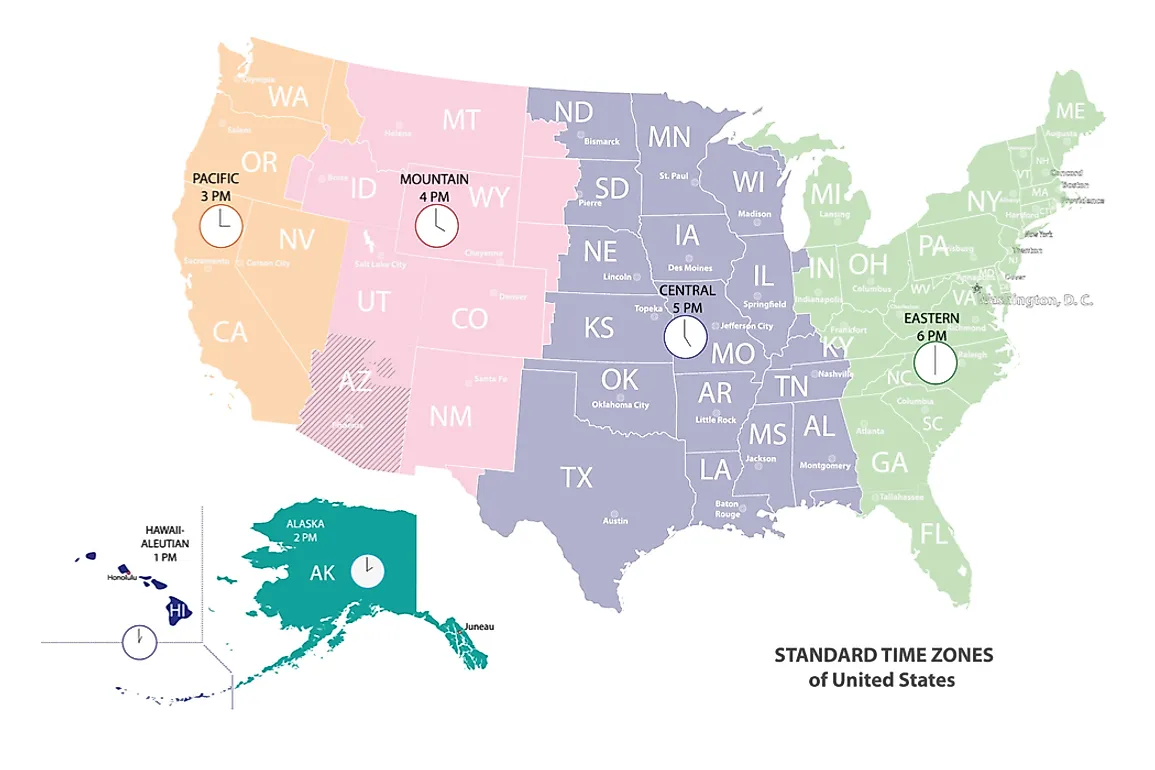How Many Time Zones Are in Alaska?

Alaska is the largest state in the United States of America, and occupies 20% of the entire land mass of the union. The highest point in the country, Denali, which reaches 20,320 feet high, is found in Alaska. Because of its large size, the subject of its time zones has always been a sore topic among its residents.
History of Alaska
Alaska is a state in the United States of America. It was first discovered by the Western world in 1741 by an expedition from Russia, and the Russian American Company was given control over Alaska in 1799. However, the British and the Americans disputed Russian claims to an area in North America. After the Crimean War of the 1850s, Russia nearly went bankrupt, and they approached the American government with an offer to sell Alaska. This led to the United States of America purchasing Alaska on March 30th, 1867 for $7.2 million, or two cents an acre. It officially became one of the states in the union on January 3rd, 1959.
Four Time Zones
When people first settled in the state, they largely decided their own time zones. However, the time zones gradually came to be divided into four. First, there was Pacific Time, which covered South Eastern Alaska. Next came Yukon time, which was concentrated around Yakutat. Then there was Alaska time, which ranged from an area east of Cold Bay to just west of Yakutat, and moved Northward towards Nome. Finally, there was Bering time, which covered the Aleutian chain and the Northern Coast of the State of Alaska. Interestingly enough, in the period following the end of the Second World War, the capital of Alaska, Juneau, was changed from Pacific Time to Alaska Standard Time which meant that despite it being located in the Southeast of the country, it occupied a different time zone from the region surrounding it. City residents were up in uproar at this, and after a chaotic political process that saw an attempt to recall of the mayor and four assembly members, the change was reversed.
From Four to Two
However, this demarcation into four zones proved problematic as it prevented the state from being a unified whole, affected the ease of doing business in the state and disrupted methods of communication. Therefore, in 1983, Secretary Elizabeth Dole embarked upon a plan to reduce these complications by having proposing two time zones for Alaska rather than four. The result of this is that since then, 90% of Alaska residents use Alaska Standard Time which is only an hour behind the time in the West Coast of America, while the rest of the state, particularly in parts of the Aleutian and St. Lawrence Islands, use Hawaii-Aleutian Standard time. In addition, Alaska participates in Daylight Savings, which attempts to fix some of the problems their time zones bring. Nevertheless, while the change in time zones from four to two was welcomed by most Alaskans, there were few pockets of resistance. For instance, members of the Metlakatla Indian Reservation wanted to be in Pacific Time because the regional office of Indian Affairs Bureau was in Portland.











